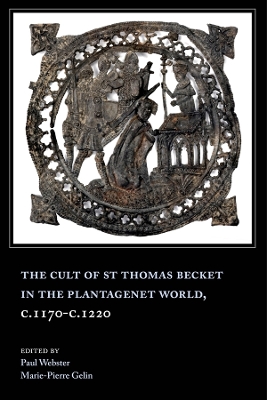Thomas Becket - the archbishop of Canterbury cut down in his own cathedral just after Christmas 1170 - stands amongst the most renowned royal ministers, churchmen, and saints of the Middle Ages. He inspired the work of medieval writers and artists, and remains a compelling subject for historians today. Yet many of the political, religious, and cultural repercussions of his murder and subsequent canonisation remain to be explored in detail.
This book examines the development of the cult and the impact of the legacy of Saint Thomas within the Plantagenet orbit of the late twelfth and early thirteenth centuries - the "Empire" assembled by King Henry II, defended by his son King Richard the Lionheart, and lost by King John. Traditional textual and archival sources, such as miracle collections, charters, and royal and papal letters, are used in conjunction with the material culture inspired by the cult, toemphasise the wide-ranging impact of the murder and of the cult's emergence in the century following the martyrdom. From the archiepiscopal church at Canterbury, to writers and religious houses across the Plantagenet lands, to thecourts of Henry II, his children, and the bishops of the Angevin world, individuals and communities adapted and responded to one of the most extraordinary religious phenomena of the age.
Dr Paul Webster is currently Lecturer in Medieval History and Project Manager of the Exploring the Past adult learners progression pathway at Cardiff University; Dr Marie-Pierre Gelin is a Teaching Fellow in the History Department at University College London.
Contributors: Colette Bowie, Elma Brenner, José Manuel Cerda, Anne J. Duggan, Marie-Pierre Gelin, Alyce A. Jordan, Michael Staunton, Paul Webster.
- ISBN10 1783271612
- ISBN13 9781783271610
- Publish Date 15 December 2016
- Publish Status Active
- Publish Country GB
- Publisher Boydell & Brewer Ltd
- Imprint The Boydell Press
- Format Hardcover
- Pages 270
- Language English
